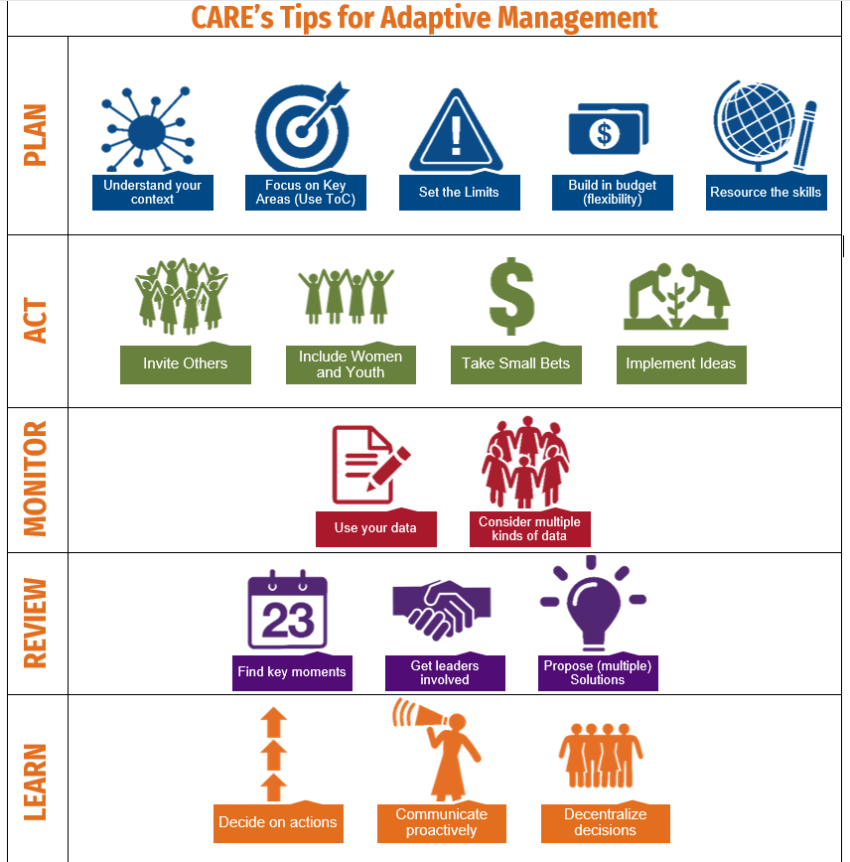Listen Carefully, Tread Lightly, Adapt Quickly: CARE's Approach to Adaptive Management
My first job in development was as an “Institutional Memory Specialist” (a fancy title to avoid calling me “intern in charge of finding paperwork”) in Bamako, Mali. On my first day, my boss handed me two documents—the proposal and the log frame—and said, “Here’s everything you’ll need to know to get started.” Here’s the problem: by then, we were 4 years into a 5-year project. If nothing has changed in your project since you wrote the proposal, you probably haven’t done a great job of adapting along the way.
It’s easy to understand why adaptive management matters. No matter how much we plan, situations will always change as we’re trying to do our work. That’s especially true for organizations like CARE, which is fighting poverty with some of the most vulnerable people in the most challenging contexts in the world. And it’s only going to get more true, as 80% of the world’s poor people will be living in fragile, fast changing, and unpredictable contexts by 2030. Finding ways to adapt to those contexts and continue to support people in a changing world is the only way to truly achieve our mission. It’s the only way to have lasting impact for people in need.
The challenge is often that it’s easy to say we should do adaptive management, and it’s harder to actually do adaptive management. Too often, project teams—as well as leaders, managers, and donor representatives—set the proposal as a north star from which they cannot deviate. Change is hard. Rapid change of complex projects in a chaotic context is harder.

Change is hard, but it’s possible. In reality, my first boss in Mali was an amazing adaptive manager. He made little tweaks along the way. He knew how to read the context and figure out what happened next. He knew how to do it, but he struggled to explain how it worked. And he never wrote it down.
So how do we make it possible for people who do adaptive management to articulate it effectively so that others can follow along? How do we make it easier for those who are learning to build in practical steps that make adaptation possible? How do we ensure that adaptations are based on the best possible evidence given the need and the timing?
To meet this need, CARE has just released Listen carefully. Tread Lightly. Adapt quickly: CARE’s Approach to Adaptive Management. Drawing from learning and approaches in the CLA toolkit, academic research on experiential learning, and from DFID and Overseas Development Institute (ODI) on Adaptive Development, the document combines CARE’s Tips for Adaptive Management—a series of practical steps to build into a project cycle—with concrete case examples of how others have handled the work. For each tip, a few examples illustrate how projects have implemented that suggestion and the results they have had.
We’re complementing the paper with a series of more in-depth case studies, like:
As we publish more, you can find them all here. We’re excited to share and see how people can use these tips to transform their programming. Let us know if they are helpful, or if there’s anything you would change.



